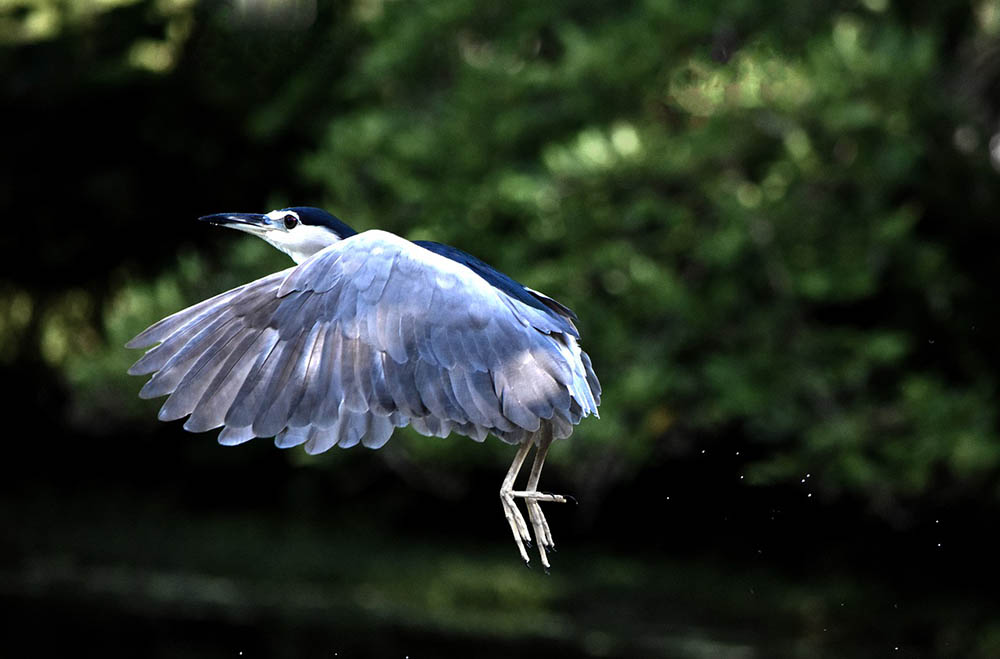Can Some Birds Fly Backwards? Which Ones?
Last Updated on

We see birds flying around all the time—in the yard, in the street, and even in our homes if we’re bird owners. It’s pretty impressive to watch them flit and flutter about or to see just how high in the sky they can get. It’s also fun to watch them dive bomb from high up when they’re hunting something. But have you ever seen a bird fly backwards?
Whether or not some birds can fly backwards is a good question. It would seem like they’d be able to, considering everything else they can accomplish with their wings. But the truth is that 99%1 of bird species are unable to fly backwards. However, there are a handful that can.

Which Birds Can Fly Backwards?
So, if there’s only a handful of birds that can fly backwards, which ones are they? And can they fly backwards for long distances or is it something they can do only temporarily?
Birds such as warblers, flycatchers, herons, and egrets can fly backwards. The catch is these birds can only do this for a short period of time. This backwards flying technique is used as a defensive strategy to keep themselves safe from harm.
There’s only a single bird in the world that can fly backwards for real—as in not in defense, but whenever they want—and they can do this for a length of time. What bird is that? The hummingbird! Plus, this species can also fly upside down or even hover in a single spot. Pretty cool, right?

Why Can’t Birds Fly Backwards?
Birds have some pretty powerful muscles in their wings. They have to so they can get around as they do. However, the structure of most birds’ wings is that these powerful muscles are able to pull the wing down, which forces air backwards and the bird forward. Muscles used to lift wings back up are much weaker, so birds use wind to lift them. This makes it so that birds are unable to fly backwards.
What’s the difference with hummingbirds then? Why are they able to fly backwards? The reason hummingbirds can fly backwards is because their wing structure is different to that of other birds. This bird species has a shoulder connected to the wing that contains a ball and socket joint (much like our own). This joint enables them to rotate their wings 180-degrees in all directions. So, where most birds fly with their wings moving up and down, the hummingbird moves its wings back and forth while making a figure eight motion. Thus, the ability to fly backwards!
Related Read: The 4 Best Places to Hang a Hummingbird Feeder (With Tips)
In Conclusion
Most birds cannot fly backwards, because they’re wing structure isn’t set up to let them do so. However, a few birds can fly backwards temporarily as a defense mechanism. The only bird to truly be able to fly backwards, though, is the hummingbird. This species’ wing structure is the only one to have a shoulder with a ball and socket joint, making them able to rotate their wings 180-degrees in all directions. This distinction enables them to fly backwards…and forwards and upside down and more!
Featured Image Credit by: happypixel19, Pixabay
About the Author Misty Layne
Misty Layne lives out in the woods in small-town Alabama with her two cats. She also has an array of stray cats, raccoons, and possums who like to call her front porch home. When she’s not writing about animals, you’ll find her writing poetry, stories, and film reviews and is excited to share her knowledge with you all. In her free time, Misty enjoys chilling with her cats, playing piano, watching indie and foreign films.
Related Articles:
How to Clean a Refractor Telescope: Step-by-Step Guide
How to Clean a Telescope Eyepiece: Step-by-Step Guide
How to Clean a Rifle Scope: 8 Expert Tips
Monocular vs Telescope: Differences Explained (With Pictures)
What Is a Monocular Used For? 8 Common Functions
How to Clean a Telescope Mirror: 8 Expert Tips
Brightfield vs Phase Contrast Microscopy: The Differences Explained
SkyCamHD Drone Review: Pros, Cons, FAQ, & Verdict
